Tripp Lite APS1250 Users Manual
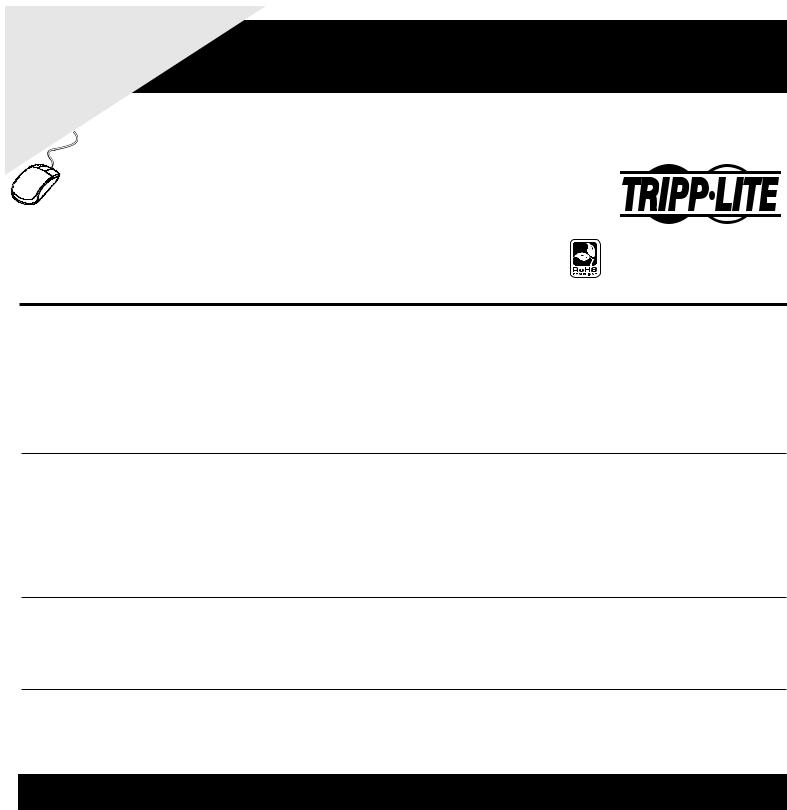
|
|
|
|
|
y |
n |
for |
Lite |
|
|
|
|
nt |
||||||
|
|
|
|
|
com/warranty |
||||
|
|
stron a |
|
||||||
|
|
a |
|
io |
|
|
|
||
|
|
|
a |
today |
|
||||
|
rr |
|
|
t |
|
|
Tripp |
|
|
|
|
|
|
|
|
|
|||
a |
|
|
|
-lineR |
|
|
|||
W |
i |
|
|
|
F |
EE |
|
||
|
|
|
. |
|
|||||
g |
|
|
tripplite |
|
|
||||
R |
|
|
|
|
|
||||
|
egister . |
|
|
|
|
||||
Re |
|
|
win |
|
|
|
|
||
|
to |
|
|
|
|
|
|||
chance |
|
|
|
|
|
|
|||
product! |
www |
|
|
|
|
||||
a |
|
|
|
|
|
|
|
|
|
Owner’s Manual
PowerVerter®
DC-to-AC Inverter/Chargers
APSX Models |
Input |
Output |
|
APS Models |
Input |
Output |
|
1111 W. 35th Street, Chicago, IL 60609 USA |
|
Customer Support: 773.869.1234 |
|||||||
Invert: |
12 VDC |
230V, 50 Hz. AC |
|
Invert: |
12 VDC |
120V, 60 Hz. AC |
www.tripplite.com |
|
|
|
|||||||
Charge: |
230V, 50 Hz. AC |
12 VDC |
|
Charge: |
120V, 60 Hz. AC |
12 VDC |
|
|
Quiet Mobile Power
Congratulations! You've purchased the most advanced, feature-rich Inverter/Charger designed as an alternative energy source for residential, commercial or recreational vehicle applications. Tripp Lite Inverter/Chargers are the quiet alternative to gas generators—with no fumes, fuel or noise to deal with! You get AC electricity anywhere and anytime you need it: utility power disruptions, rolling down the highway, dry camping in majestic back country or parked overnight at a money-saving non-electric site. Inverter/Chargers provide your equipment with utilityor generator-supplied AC electricity (filtered through premium ISOBAR® surge protection) whenever available. In addition, your Inverter/Charger automatically recharges your connected battery bank. Whenever blackouts, brownouts or high voltages occur, your Inverter/Charger immediately and automatically switches to battery power.
Better for Your Equipment
Premium Protection Levels
•Built-In ISOBAR® Surge Protection
•Automatic Overload Protection
Ideal Output for All Loads
•Frequency-Controlled Output
•Automatic Load Switching
•Balanced Load Sharing
Better for Your Batteries
Faster Battery Recharge
• High-Amp, 3-Stage Battery Charger
Critical Battery Protection
• High-Efficiency DC-to-AC Inversion
Better for You
Quiet, Simple, Maintenance-Free Operation
•Multi-Function Lights & Switches
•Moisture-Resistant Construction*
Contents
Safety |
2 |
|
|
Feature Identification |
3 |
|
|
Operation |
4-5 |
|
|
Configuration |
5-6 |
|
|
Battery Selection |
7 |
|
|
Mounting |
8 |
|
|
Battery Connection |
9 |
|
|
AC Input/Output Connection |
10 |
|
|
Service/Maintenance |
10 |
|
|
Troubleshooting |
11 |
|
|
Warranty |
11 |
|
|
|
|
Español |
12 |
|
|
Français |
23 |
|
|
Pyсский |
34 |
|
|
* Inverter/Chargers are moisture-resistant, not waterproof.
Copyright © 2008. All rights reserved. PowerVerter® is a registered trademark of Tripp Lite.
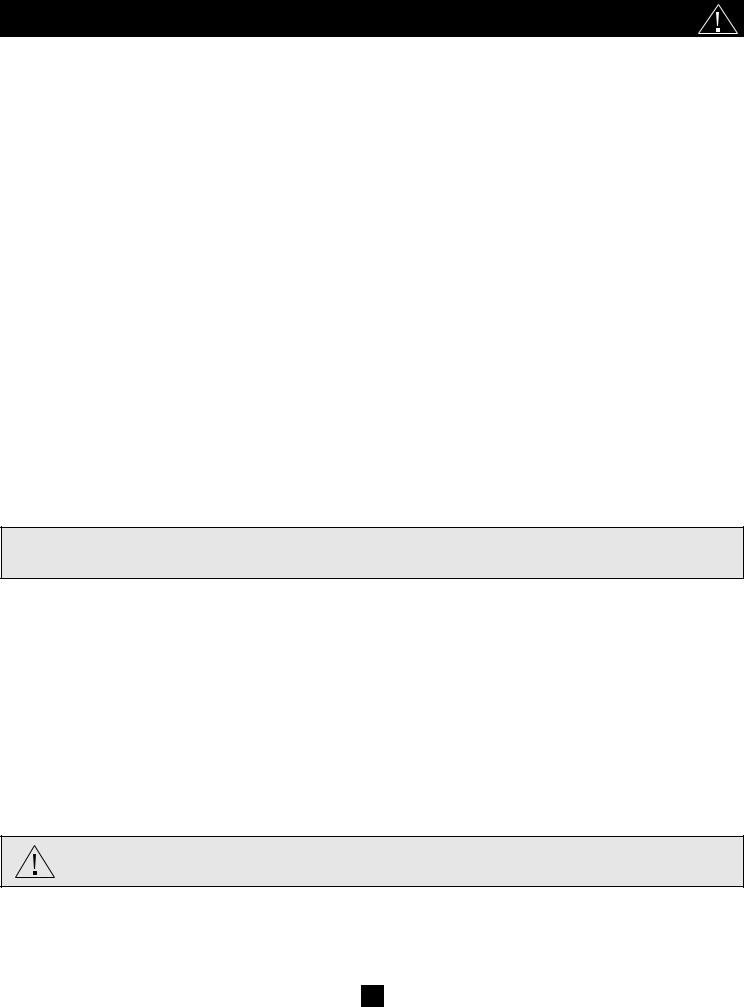
Important Safety Instructions
SAVE THESE INSTRUCTIONS!
This manual contains important instructions and warnings that should be followed during the installation, operation and storage of this product.
Location Warnings
•Although your Inverter/Charger is moisture resistant, it is NOT waterproof. Flooding the unit with water will cause it to short circuit and could cause personal injury due to electric shock. Never immerse the unit, and avoid any area where standing water might accumulate. Mounting should be in the driest location available.
•Leave a minimum of 2" clearance at front and back of the Inverter/Charger for proper ventilation. To avoid automatic Inverter/Charger shutdown due to overtemperature, any compartment that contains the Inverter/Charger must be properly ventilated with adequate outside air flow. The heavier the load of connected equipment, the more heat will be generated by the unit.
•Do not install the Inverter/Charger directly near magnetic storage media, as this may result in data corruption.
•Do not install near flammable materials, fuel or chemicals.
•Do not mount unit with its front or rear panel facing down (at any angle). Mounting in this manner will seriously inhibit the unit's internal cooling, eventually causing product damage not covered under warranty.
Battery Connection Warnings
•The battery should be connected before operating the Inverter/Charger
•Multiple battery systems must be comprised of batteries of identical voltage, age, amp-hour capacity and type.
•Because explosive hydrogen gas can accumulate near batteries if they are not kept well ventilated, your batteries should not be installed (whether for a mobile or stationary application) in a “dead air” compartment. Ideally, any compartment would have some ventilation to outside air.
•Sparks may result during final battery connection. Always observe proper polarity as batteries are connected.
•Do not allow objects to contact the two DC input terminals. Do not short or bridge these terminals together. Serious personal injury or property damage could result.
Equipment Connection Warnings
Use of this equipment in life support applications where failure of this equipment can reasonably be expected to cause the fail- ure of the life support equipment or to significantly affect its safety or effectiveness is not recommended. Do not use this equip- ment in the presence of a flammable anesthetic mixture with air, oxygen or nitrous oxide.
•You may experience uneven performance results if you connect a surge suppressor, line conditioner or UPS system to the output of the Inverter/Charger.
•Corded Models: Do not modify the Inverter/Charger’s plug or receptacle in a way that eliminates its ground connection. Do not use power adapters that will eliminate the plug’s ground connection.
•Connect your Inverter/Charger only to a properly grounded AC power outlet or hardwired source. Do not plug the unit into itself; this will damage the device and void your warranty.
•The main grounding lug should be connected to earth ground or to the vehicle chassis with a minimum 8 AWG wire.
Operation Warnings
•Your Inverter/Charger does not require routine maintenance. Do not open the device for any reason. There are no user-serviceable parts inside.
•Potentially lethal voltages exist within the Inverter/Charger as long as the battery supply and/or AC input are connected. During any service work, the battery supply and AC input connection (if any) should therefore be disconnected.
•Do not connect or disconnect batteries while the Inverter/Charger is operating in either inverting or charging mode. Operating Mode Switch should be in the DC OFF position. Dangerous arcing may result.
Caution: These models have a failsafe AC pass-through feature where the AC output will be live (if AC input is available) even though the operating mode switch is set to “DC OFF.”
2
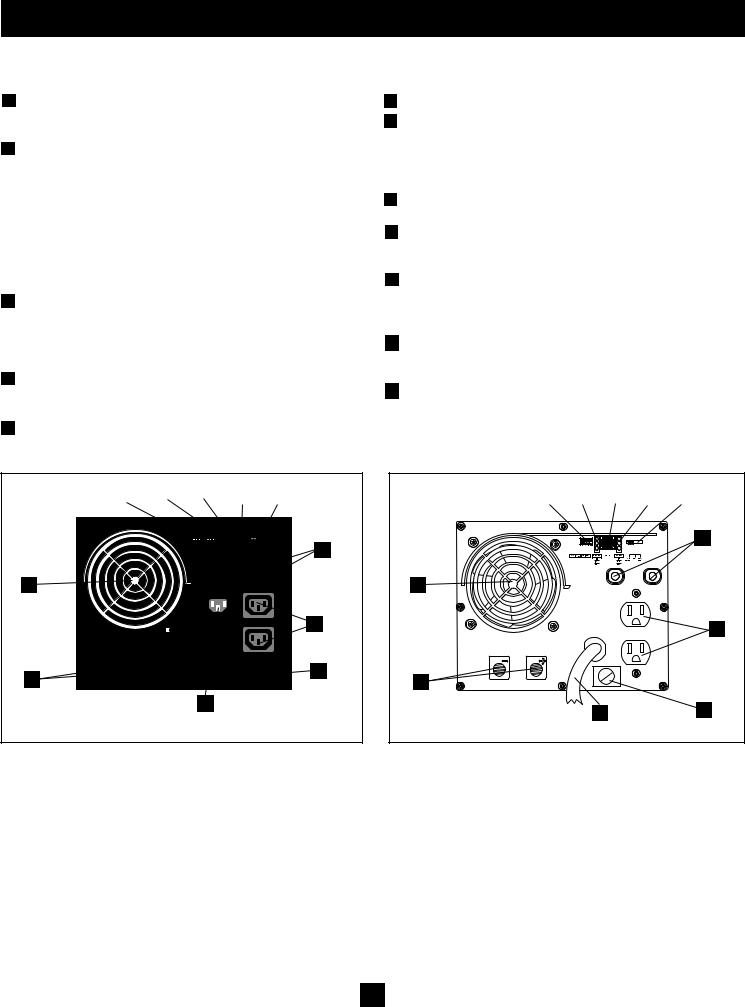
Feature Identification
Identify the premium features on your specific model and quickly locate instructions on how to maximize their use.
1 Configuration DIP Switches: optimize Inverter/Charger operation depending on your application. See Configuration section for setting instructions.
2Operating Mode Switch: controls Inverter/Charger operation.
The "AUTO/REMOTE" setting ensures your equipment receives constant, uninterrupted AC power. It also enables the Inverter/ Charger to be remotely monitored and controlled with an optional remote module (Tripp Lite model APSRM4, sold sepa- rately). The "CHARGE ONLY" setting allows your batteries to return to full charge faster by turning the inverter off which halts battery discharging. The "DC OFF" setting de-energizes the unit and connects AC OUT to AC IN. See Operation section for set- ting instructions.
3"LINE", "INVERT", "LOAD" LEDs: show whether the
Inverter/Charger is operating from AC line power or DC battery power. It also warns you if the connected equipment load is too high. See Operation section for instructions on reading the indicator lights.
4"BATT VOLTAGE" LEDs: these three lights will turn ON in severalsequencestoshowapproximatebatterylevel.SeeOperation section for instructions on reading the indicator lights.
5DC Power Terminals: connect to your battery terminals. See Battery Connection section for instructions.
6 AC Output Receptacles
7A AC Input Receptacle (230V Models): attach input cord to connect the Inverter/Charger to any source of utilityor generatorsupplied AC power. The user must provide an appropriate country-specific input cable for 230V Models. See AC Input/
Output Connection section for instructions.
7B AC Input Cord (120V Models): plug the Inverter/Charger into a utilityor generator-supplied AC power outlet.
8ResettableCircuitBreakers:protect your Inverter/Charger against damage due to overload or charger failure. See Operation section for resetting instructions.
9Remote Control Module Connector: allows remote monitoring and control with an optional module (Tripp Lite model APSRM4, sold separately). See remote module owner’s manual for con- nection instructions.
10Main Ground Lug: properly grounds the Inverter/Charger to vehicle grounding system or to earth ground. See Configuration section for instructions.
11Cooling Fan: quiet, efficient fan prolongs equipment service life.
1 |
|
4 |
|
9 |
|
3 |
|
2 |
|
|
|
|
|
|
|
|
|
|
|
|
|
|
|
1 |
|
4 |
|
9 |
|
3 |
|
2 |
|||||
|
|
|
|
|
|
|
|
|
|
|
|
|
|
|||||
|
|
|
|
|
|
|
|
|
|
|
|
|
|
|
|
|
|
|
|
8 |
|
8 |
11 |
11 |
|
|
6 |
|
6 |
|
|
|
|
|
5 |
|
10 |
5 |
|
|
|
|
||
|
7A |
|
7B |
10 |
|
|
|
||
|
|
|
|
|
Front View (230V Non-Corded Models) |
|
|
Front View (120V Corded Models) |
|
3
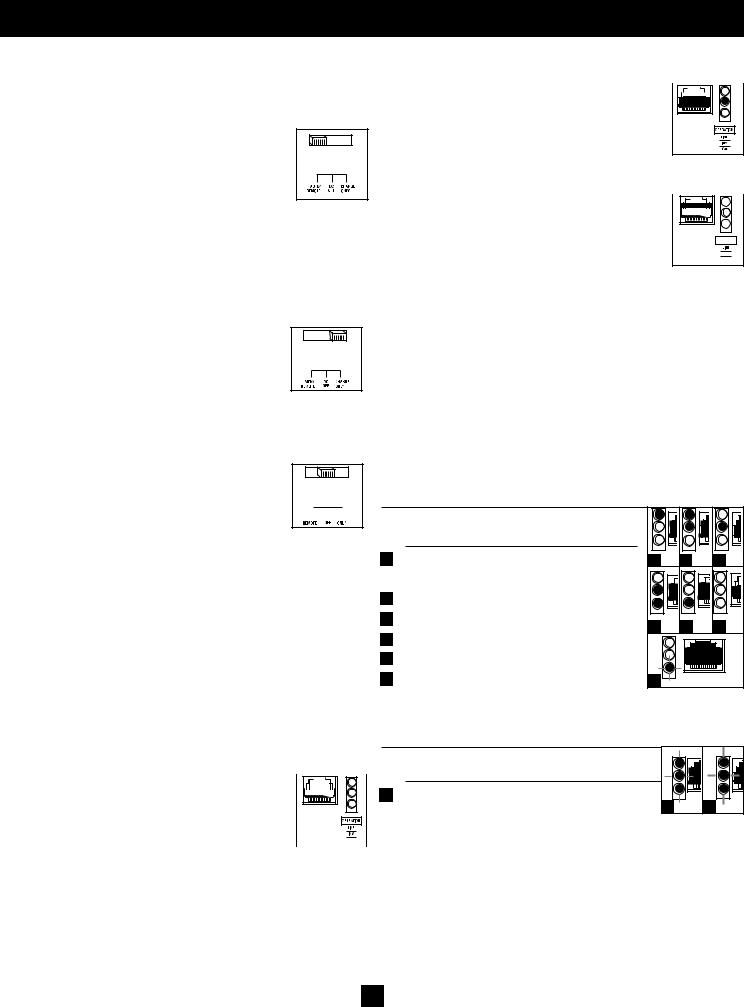
Operation
Switch Modes
After configuring, mounting and connecting your Inverter/Charger, you are able to operate it by switching between the following operating modes as appropriate to your situation:
“AUTO/REMOTE”: Switch to this mode when you need constant, uninterrupted AC power for connected
appliances and equipment. The Inverter/Charger will
continue to supply AC power to connected equipment and to charge your connected batteries while utility-
or generator-supplied AC power is present. Since the
inverter is ON (but in Standby) in this mode, it will automatically switch to your battery system to supply AC power to connected equipment in the absence of a utility/generator source or in over/ under voltage situations. “AUTO/REMOTE” also enables an option- al remote control module (Tripp Lite model APSRM4, sold separately) to function when connected to the unit.
“CHARGE ONLY”: Switch to this mode when you
are not using connected appliances and equipment in order to conserve battery power by disabling the
inverter. The Inverter/Charger will continue to sup-
ply AC power to connected equipment and charge connected batteries while utilityor generator-sup-
plied AC power is present. However, since the inverter is OFF in this mode, it WILL NOT supply AC power to connected equipment in the absence of a utility/generator source or in over/under voltage situations.
“DC OFF”: Switch to this mode to prevent the inverter from drawing power from the batteries. Use
this switch to automatically reset the unit if it shuts
down due to overload or overheating. First remove 



 the excessive load or allow the unit to sufficiently
the excessive load or allow the unit to sufficiently
cool (applicable to your situation). Switch to "DC OFF", then back to "AUTO/REMOTE" or "CHARGE ONLY" as desired. If unit fails to reset, remove more load or allow unit to cool further and retry.
Use an optional remote control module (Tripp Lite model APSRM4, sold separately) to reset unit due to overload and overtemperature.
CAUTION: The unit will always pass AC power through to con- nected equipment if plugged into a live AC outlet, regardless of the position of the Operating Mode Switch.
Indicator Lights
Your Inverter/Charger is equipped with a simple, intuitive, userfriendly set of indicator lights. These easily-remembered “traffic light” signals will allow you, shortly after first use, to tell at a glance a wide variety of operating details.
“LINE Green LED”: If the operating mode switch is set to “AUTO/ REMOTE”, this light will ILLUMINATE  CONTINUOUSLY when your connected equipment
CONTINUOUSLY when your connected equipment 
is receiving continuous AC power supplied from a utility/generator source.
If the operating mode switch is set to “CHARGE  ONLY”, this light will BLINK to alert you that the
ONLY”, this light will BLINK to alert you that the
unit’s inverter is OFF and will NOT supply AC power in the absence of a utility/generator source or in over/under voltage situations.
Indicator Lights (Continued)
“INV” (Inverting) Yellow LED: This light will 
ILLUMINATE CONTINUOUSLY whenever con- nected equipment is receiving battery-supplied,
inverted AC power (in the absence of a utility/generator source or in over/under voltage situations). This light will be off when AC power is supplying the
load.
“LOAD”RedLED:ThisredlightwillILLUMINATE  CONTINUOUSLY whenever the inverter is func-
CONTINUOUSLY whenever the inverter is func- 

 tioning and the power demanded by connected appli-
tioning and the power demanded by connected appli-  ances and equipment exceeds 100% of load capacity.
ances and equipment exceeds 100% of load capacity. 

 The light will BLINK to alert you when the inverter
The light will BLINK to alert you when the inverter  shuts down due to a severe overload or overheating.
shuts down due to a severe overload or overheating.
If this happens, turn the operating mode switch to “DC OFF”; remove the overload and let the unit cool. You may then turn the operating mode switch to either “AUTO/REMOTE” or “CHARGE ONLY” after it has adequately cooled. This light will be off when
AC power is supplying the load.
"BATT VOLTAGE" LEDs: If the operating mode switch is in the
"AUTO/REMOTE" or "CHARGE ONLY" position, the LEDs indi- cate the approximate charge level and voltage of your connected battery bank and alert you to several fault conditions. See Chart for charge and voltage levels.
LED Function with Switch in "AUTO/REMOTE" or “Charge Only” Position
Approximate Battery Charge Level*
|
LEDs |
Battery Capacity |
|
|
|
|
Illuminated |
(Charging/Discharging) |
|
|
|
1 |
Green |
91%–Full |
1 |
2 |
3 |
|
Green & Yellow |
81%–90% |
|
|
|
|
|
|
|
|
|
2 |
|
|
|
|
|
|
|
|
|
||
|
|
|
|
|
|
|
|
|
|||
|
|
|
|
|
|
|
|
|
|
|
|
3 |
Yellow |
61%–80% |
|
|
|
4 |
Yellow & Red |
41%–60% |
4 |
5 |
6 |
|
Red |
21%–40% |
|||
5 |
|
|
|
6 |
All three lights off |
1%–20% |
|
7 |
Flashing red |
0% (Inverter |
7 |
|
|
shutdown)** |
|
* Charge levels listed are approximate. Actual conditions vary depending on battery condition and load. ** Inverter shutdown protects battery against damage due to excessive discharge.
Fault Condition |
|
|
|
|
|
LEDs |
Fault |
|
|
|
Illuminated |
Condition |
|
|
1 |
All three lights |
Excessive discharge |
1 |
2 |
|
flash slowly* |
(Inverter shutdown) |
||
|
All three lights |
Overcharge (Charger |
2 |
||
|
flash quickly** |
shutdown) |
*Approximately ½ second on, ½ second off. See Troubleshooting section. Inverter shutdown protects battery against damage due to excessive discharge.** Approximately ¼ second on, ¼ second off. Charger shutdown protects battery against damage due to overcharge. May also indicate a battery charger fault exists. See Troubleshooting section.
4
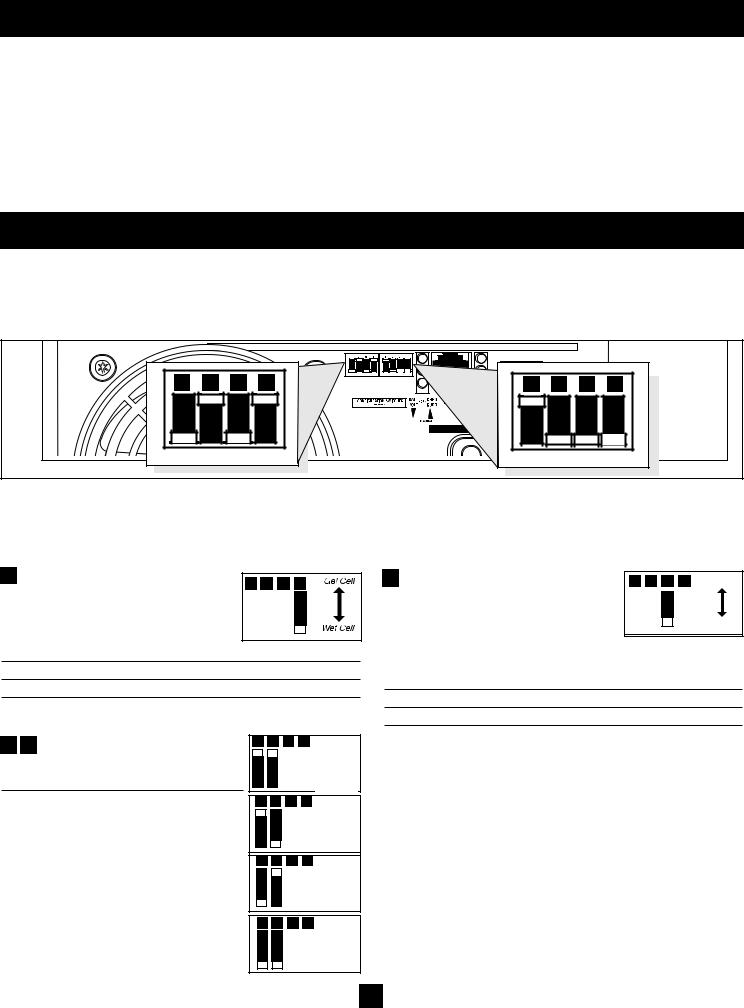
Operation (continued)
Resetting Your Inverter/Charger to Restore AC Power
Your Inverter/Charger may cease supplying AC power or DC charging power in order to protect itself from overload or to protect your electrical system. To restore normal functioning:
Overload Reset: Switch operating mode switch to “DC OFF” and remove some of the connected electrical load (i.e., turn off some of the
AC devices drawing power which may have caused the overload of the unit). Wait one minute, then switch operating mode switch back to either “AUTO/REMOTE” or “CHARGE ONLY.”
Output Circuit Breaker Reset: If tripped, remove a portion of the load, wait one minute and then press breaker button to reset.
Configuration
Set Configuration DIP Switches
Using a small tool, set the Configuration DIP Switches (located on the front panel, see diagram) to optimize Inverter/Charger operation depending on your application. Refer to the appropriate section to review the instructions for your specific model.
B4 |
B3 |
B2 |
B1 |
Group B Dip Switches
A4 |
A3 |
A2 |
A1 |
|
OUTPUT C/B 12A |
|
|
Group A Dip Switches
Group A DIP Switches (All Models)
Using a small tool, configure your Inverter/Charger by setting the four Group A DIP Switches (located on the front panel of your unit; see diagram) as follows:
A1 Select Battery Type—REQUIRED |
A4 |
A3 |
A2 |
A1 |
||
CAUTION: The Battery Type DIP Switch setting must match |
||||||
|
|
|
|
|||
the type of batteries you connect, or your batteries may be |
|
|
|
|
||
degraded or damaged over an extended period of time. See |
|
|
|
|
||
"Battery Selection" section for more information. |
|
|
|
|
|
|
Battery Type |
|
|
|
|
|
|
Switch Position |
|
|
|
|
|
|
AGM/Gel Cell (Sealed) Battery |
Up |
|
|
|
|
|
Wet Cell (Vented) Battery |
Down (factory setting) |
|||||
A4 A3 SelectLowACInputVoltagePointfor
SwitchingtoBattery—OPTIONAL*
Voltage and Level
120VModels |
230VModels |
SwitchPosition |
|
|
|
A 105V |
201V |
A4 Up & A3 Up |
|
|
|
B 95V |
182V |
A4 Up & A3 Down |
|
|
|
C 85V |
163V |
A4 Down & A3 Up |
|
|
|
D 75V |
144V |
A4 Down & A3 Down |
|
|
(factory setting) |
|
|
|
* Most of your connected appliances and equipment will perform adequately when your Inverter/Charger's Low AC Voltage Input Point (DIP Switch #3 and #4 of Group A) are set to Level B (95V for 120V Models/182V for 230V Models). However, if the unit frequently switches to battery power due to momentary low line voltage swings that would have little effect on equipment operation, you may wish to adjust this setting. By decreasing the Low AC Voltage Input Point, you will reduce the number of times that your unit switches to battery due to voltage swings.
A4 A3 A2 A1
Level A
A4 A3 A2 A1
Level B
A4 A3 A2 A1
Level C
A4 A3 A2 A1
Level D
A2 |
Select Charger Enable/Inhibit |
A4 A3 A2 A1 INHIBIT |
|
Switch is preset to ENABLE, which |
|
|
permits continuous battery charging. |
|
|
If you are connecting your unit to |
ENABLE |
|
batteries with a separate charger, you may |
|
|
|
|
|
set this switch to INHIBIT to disable its |
|
|
built-in charger to prevent overcharging. |
|
Battery Type |
Switch Position |
Inhibit |
Up |
Enable |
Down (factory setting) |
5
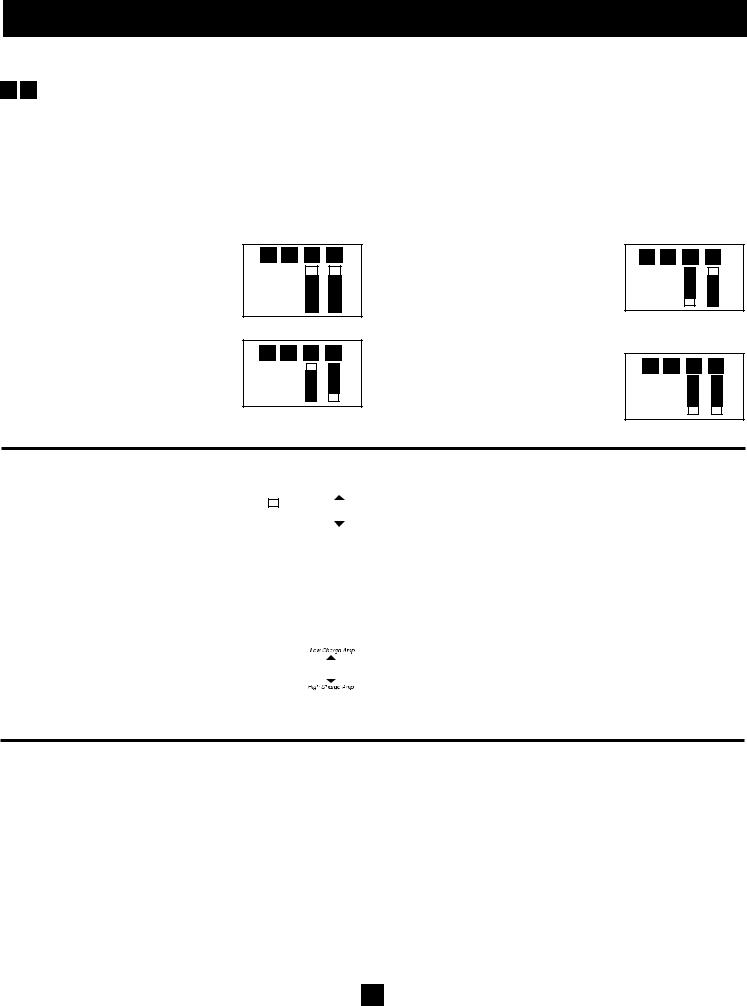
Configuration (continued)
Group B DIP Switches (Select Models Only)
B1 B2 Select AC Input Current Sharing—OPTIONAL
Your Inverter/Charger features a high-output battery charger that can draw a significant amount of AC power from your utility source or genera- tor when charging at its maximum rate. If your unit is supplying its full AC power rating to its connected heavy electrical loads at the same time as this high charging occurs, the AC input circuit breaker could trip, resulting in the complete shut off of pass-though utility power.
To reduce the chance of tripping this breaker, all Inverter/Chargers are pre-set to automatically limit the input current as described in "Most Limiting" below. If your unit is equipped with DIP switches B2 and B1, they may be used to select otherAC input current sharing settings.Verify that AC input wiring is rated for the higher current that results when using the other settings.
Select Battery Charger-Limiting Points
“Most Limiting” (B2 & B1 Up): Charger- limiting takes effect the moment any AC load is applied; charger output falls gradu- ally from full output at no AC load passing through to no output at full load (factory setting).
"Less Limiting" (B2 Up & B1 Down):
Charger-limiting begins when the Inverter/
Charger's load reaches 33% of the Inverter/
Charger's load rating. Charger output falls gradually from full output at 33% of the Inverter/Charger's load rating to about 33% of full output at full load.
B4 B3 B2 B1
B4 B3 B2 B1
"Least Limiting" (B2 Down & B1 Up):
Charger-limiting begins when the Inverter/
Charger's load reaches 66% of the Inverter/
Charger's load rating. Charger output falls gradually from full output at 66% of the Inverter/Charger's load rating to about 66% of full output at full load.
"No Limiting" (B2 & B1 Down): No charger-limiting occurs at any load size.
B4 B3 B2 B1
B4 B3 B2 B1
B3 |
Select Equalize Battery Charge—OPTIONAL |
|
|
|
|
|
|
|
|
|
Setting Procedure |
|
|
||||||||||
This DIP Switch is momentarily engaged to |
|
|
|
|
|
|
|
|
|
|
|
|
|
|
|
|
|
• Move to “Equalize” (DOWN) position for three seconds. |
|||||
|
B4 |
|
B3 |
|
B2 |
|
|
B1 |
Reset |
|
|||||||||||||
begin the process of equalizing the charge |
|
|
|
|
|
• Move to “Reset” (UP) position and leave it there. This is the |
|||||||||||||||||
|
|
|
|
|
|
|
|
|
|
|
|
|
|
|
|
||||||||
state of your battery’s cells by time-limited |
|
|
|
|
|
|
|
|
|
|
|
|
|
|
|
|
|
factory default setting. |
|
|
|||
|
|
|
|
|
|
|
|
|
|
|
|
|
|
|
|
|
|
||||||
overcharge of all cells. This can extend the |
|
|
|
|
|
|
|
|
|
|
|
|
|
|
|
|
|
CAUTION: Do not leave DIP switch B3 in the down position after beginning process. Battery |
|||||
|
|
|
|
|
|
|
|
|
|
|
|
Equalize |
|
||||||||||
useful life of certain types of batteries; con- |
|
|
|
|
|
|
|
|
|
|
|
|
|
|
charge equalization should only be performed in strict accordance with the battery manufacturer’s |
||||||||
|
|
|
|
|
|
|
|
|
|
|
|
|
|
|
|
|
|||||||
sult with your battery’s manufacturer to |
|
|
|
|
|
|
|
|
|
|
|
|
|
|
|
|
instructions and specifications. |
|
|
||||
|
|
|
|
|
|
|
|
|
|
|
|
|
|
|
|
Battery Charge |
Switch Position |
|
|||||
determine if your batteries could benefit from this process. The charge |
|||||||||||||||||||||||
Reset |
Up (factory setting) |
||||||||||||||||||||||
equalization process is automatic; once started, it can only be stopped |
|||||||||||||||||||||||
Equalize |
Down—momentarily |
|
|||||||||||||||||||||
by removing the input power. |
|
|
|
|
|
|
|
|
|
|
|
|
|
|
|
|
|
||||||
|
|
|
|
|
|
|
|
|
|
|
|
|
|
|
|
|
|
|
|||||
|
Set Battery Charging Amps—OPTIONAL |
|
|
|
|
|
|
|
|
|
|
|
|
|
|
Battery Charger |
Switch Position |
|
|||||
B4 |
|
|
|
|
|
|
|
|
|
|
|
|
|
|
|
||||||||
Check the nameplate label for your unit’s |
|
|
|
|
|
|
|
|
|
|
|
|
|
|
|
|
|
|
Low Charge Amps |
Up (factory setting) |
|
||
|
|
|
|
|
|
|
|
|
|
|
|
|
|
|
|
|
|
||||||
|
|
|
|
|
|
|
|
|
|
|
|
|
|
|
|
|
|
High Charge Amps |
Down |
|
|||
highand low-charging amp options. By |
|
|
B4 |
|
B3 |
|
B2 |
|
B1 |
|
|
|
|
|
|
||||||||
setting on high charging, your batteries |
|
|
|
|
|
|
|
|
|
|
|
|
|
|
|
|
|
|
CAUTION: When switching to the High Charge Amp setting, the user must ensure that the |
||||
|
|
|
|
|
|
|
|
|
|
|
|
|
|
|
|
||||||||
will charge at maximum speed. When set- |
|
|
|
|
|
|
|
|
|
|
|
|
|
|
|
|
|
|
|||||
ting on low charging, you lengthen the life |
|
|
|
|
|
|
|
|
|
|
|
|
|
|
|
|
|
|
amp-hour capacity of their battery system exceeds the amperage of the High Charge Amp |
||||
|
|
|
|
|
|
|
|
|
|
|
|
|
|
|
|
|
|
setting or the batteries may be damaged or degraded. |
|||||
of your batteries (especially smaller ones). |
|
|
|
|
|
|
|
|
|
|
|
|
|
|
|
|
|
|
|
||||
Connect Remote Control—OPTIONAL
All models feature an 8-conductor telephone style receptacle on the front panel for use with an optional remote control module (Tripp Lite modelAPSRM, sold separately). The remote module allows the Inverter/Charger to be mounted in a compartment or cabinet out of sight, while operated conveniently from the remote control module. See instructions packed with the remote control module.
6
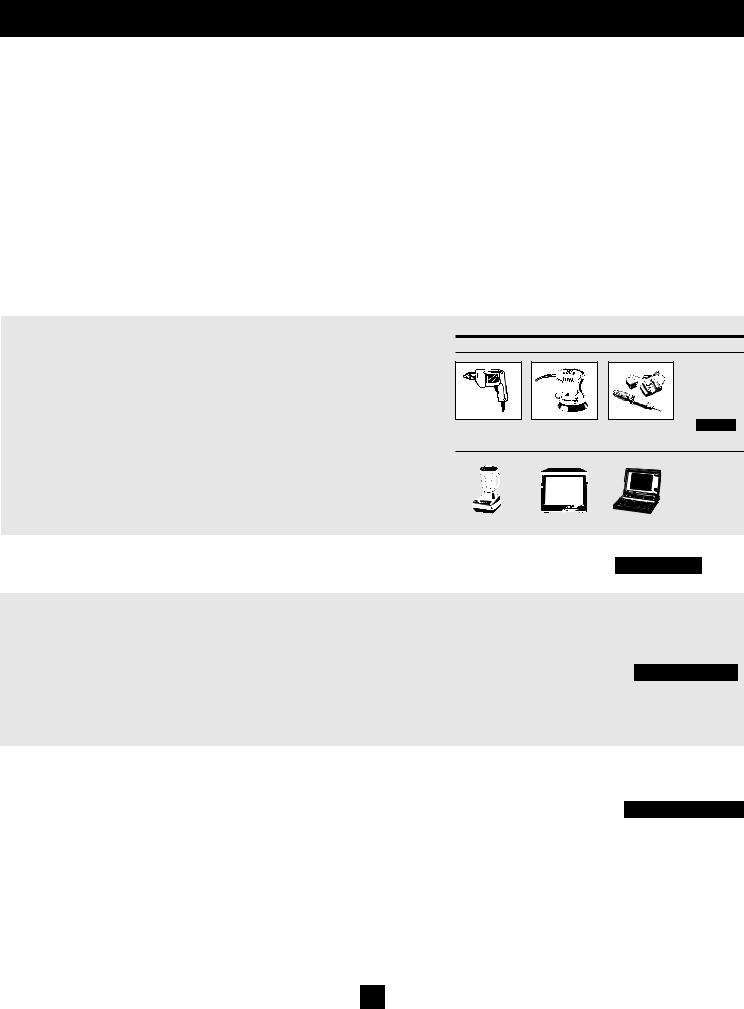
Battery Selection
Select Auxiliary Battery Type (if any)
Select “Deep Cycle” batteries to receive optimum performance from your Inverter/Charger. Do not use ordinary car or starting batteries or batteries rated in ColdCrankingAmps(CCA).IfthebatteriesyouconnecttotheInverter/ChargerarenottrueDeepCyclebatteries,theiroperationallifetimesmaybe significantly shortened. If you are using the same battery bank to power the Inverter/Charger as well as DC loads, your battery bank will need to be appropriately sized (larger loads will require a battery bank with a larger amp-hour capacity) or the operational lifetimes of the batteries may be significantly short- ened.
Batteries of either Wet-Cell (vented) or Gel-Cell /Absorbed Glass Mat (sealed) construction are ideal. 6-volt “golf cart”, Marine Deep-Cycle or 8D Deep-Cycle batteries are also acceptable.You must set the Inverter/Charger’s Battery Type DIP Switch (see Configuration section for more information) to match the type of batteries you connect or your batteries may be degraded or damaged over an extended period of time. In many cases, the vehicle battery may be the only one installed. Auxiliary batteries must be identical to the vehicle batteries if they are con- nected to each other.
Match Battery Amp-Hour Capacity to Your Application
Select a battery or system of batteries that will provide your Inverter/Charger with proper DC voltage and an adequate amp-hour capacity to power your application. Even though Tripp Lite Inverter/Chargers are highly-efficient at DC-to-AC inversion, their rated output capacities are limited by the total amp-hour capacity of connected batteries and the support of your vehicle’s alternator if the engine is kept running.
• STEP 1: Determine Total Wattage Required |
|
|
Example |
|
|
||
|
|
Tools |
|
|
|||
Add the wattage ratings of all equipment you will connect to your Inverter/Charger. |
|
|
|
|
|||
¼" Drill |
|
Orbital Sander |
|
Cordless Tool Charger |
|
|
|
Wattage ratings are usually listed in equipment manuals or on nameplates. If your |
|
|
|
|
|
|
|
equipment is rated in amps, multiply that number timesAC utility voltage to determine |
|
|
|
|
|
|
|
watts. (Example: a ¼ in. drill requires 2½ amps. 2½ amps × 120 volts = 300 watts .) |
|
|
|
|
|
|
|
Note: Your Inverter/Charger will operate at higher efficiencies at about 75% - 80% of nameplate rating. |
300W |
+ |
220W |
+ |
20W |
= |
540W |
|
|||||||
Appliances
Blender |
|
Color TV |
|
Laptop Computer |
|
|
|
|
|
300W |
+ |
140W |
+ |
100W |
= |
540W |
• STEP 2: Determine DC Battery Amps Required
Divide the total wattage required (from step 1, above) by the battery voltage (12) to determine the DC amps required.
• STEP 3: Estimate BatteryAmp-Hours Required (for operation unsupported by the alternator)
Multiply the DC amps required (from step 2, above) by the number of hours you estimate you will operate your equipment exclusively from battery power before you have to recharge your batteries with utilityor generator-supplied AC power. Compensate for inefficiency by multiplying this number by 1.2. This will give you a rough estimate of how many amp-hours of battery power (from one or several batteries) you should connect to your Inverter/Charger.
540 watts ÷ 12V = 45 DC Amps
45 DC Amps × 5 Hrs. Runtime
× 1.2 Inefficiency Rating = 270 Amp-Hours
NOTE! Battery amp-hour ratings are usually given for a 20-hour discharge rate. Actual amp-hour capacities are less when batteries are discharged at faster rates. For example, batteries discharged in 55 minutes provide only 50% of their listed amp-hour ratings, while batteries discharged in 9 minutes provide as little as 30% of their amp-hour ratings.
• STEP 4: Estimate Battery Recharge Required, Given Your Application
You must allow your batteries to recharge long enough to replace the charge lost during inverter operation or else you will eventually run down your batteries. To estimate the minimum amount of time you need to recharge your batteries given your application, divide your required battery amp-hours (from step 3, above) by your Inverter/Charger’s rated charging amps.
270 Amp-Hours ÷ 55 Amps
Inverter/Charger Rating = 5 Hours Recharge
NOTE! For Tripp Lite Inverter/Chargers providing 1250 watts or less of continuous AC power, a full-size battery will normally allow sufficient power for many applications before recharging is necessary. For mobile applications, if a single battery is continuously fed by an alternator at high idle or faster, then recharging from utility or generator power may not be necessary. For Tripp Lite Inverter/ Chargers over 1250 watts used in mobile applications, Tripp Lite recommends you use at least two batteries, if possible fed by a heavy-duty alternator anytime the vehicle is running. Tripp Lite Inverter/ Chargers will provide adequate power for ordinary usage within limited times without the assistance of utility or generator power. However, when operating extremely heavy electrical loads at their peak in the absence of utility power, you may wish to “assist your batteries” by running an auxiliary generator or vehicle engine, and doing so at faster than normal idling.
7
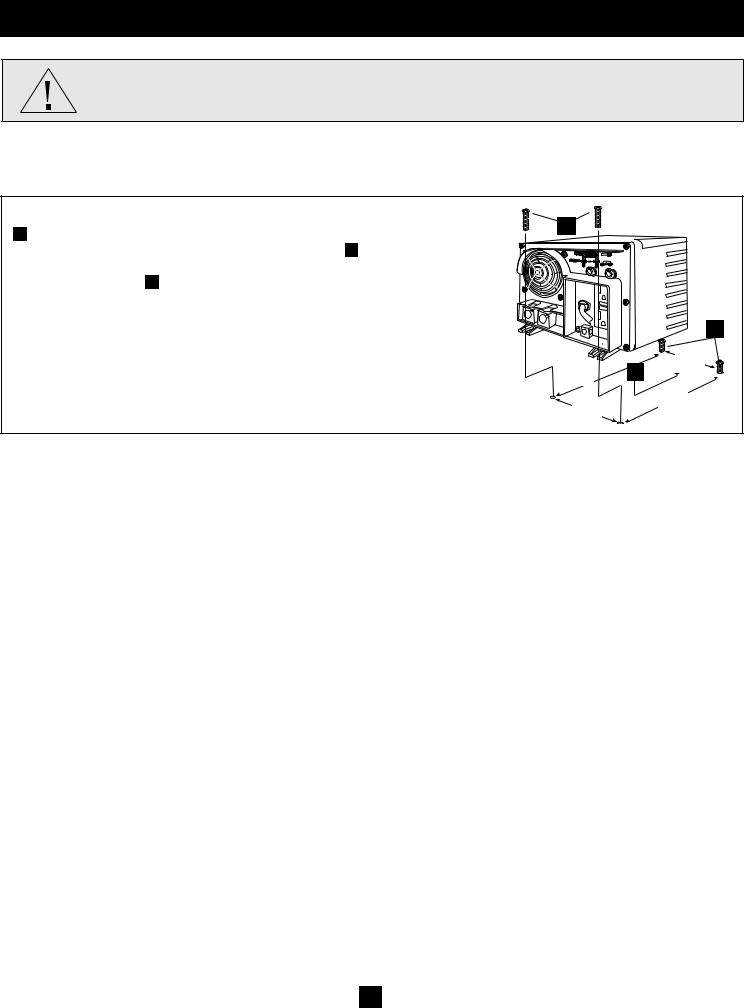
Mounting
WARNING! Mount your Inverter/Charger BEFORE DC battery and AC power connection. Failure to follow these instructions may lead to personal injury and/ or damage to the Inverter/Charger and connected systems.
Tripp Lite manufactures a variety of different Inverter/Chargers with a variety of different mounting options for use in vehicular or non-vehicular applications. Tripp Lite recommends permanent mounting of your Inverter/Charger in any of the configurations illustrated below. User must supply mounting hardware and is responsible for determining if the hardware and mounting surface are suitable to support the weight of the Inverter/Charger. Contact Tripp Lite if you require further assistance in mounting your Inverter/Charger.
Horizontal Mount
A Using the measurements from the diagram, install two user-supplied ¼" (6 mm) fasteners
C
into a rigid horizontal surface, leaving the heads slightly raised. B Slide the Inverter/ Charger back over the fasteners to engage the mounting slots molded on the bottom of the Inverter/Charger cabinet. C Install and tighten two user-supplied ¼" (6 mm) fasteners into the mounting feet molded on the front of the Inverter/Charger cabinet.
A
4.5 in.
(11.4 cm)
6.75 in. B
(17.1 cm)
|
6.75 in. |
7.87 in. |
(17.1 cm) |
|
|
(20 cm) |
|
The polycarbonate cabinet and mounting feet of your Inverter/Charger are durable enough to allow for wall mounting as well (if your vehicle compartment requires this configuration). For wall mounting, the control panel of the Inverter/Charger must face to the side and not up or down.
Allow 2" (50 mm) minimum front and rear clearance for adequate ventilation.
8
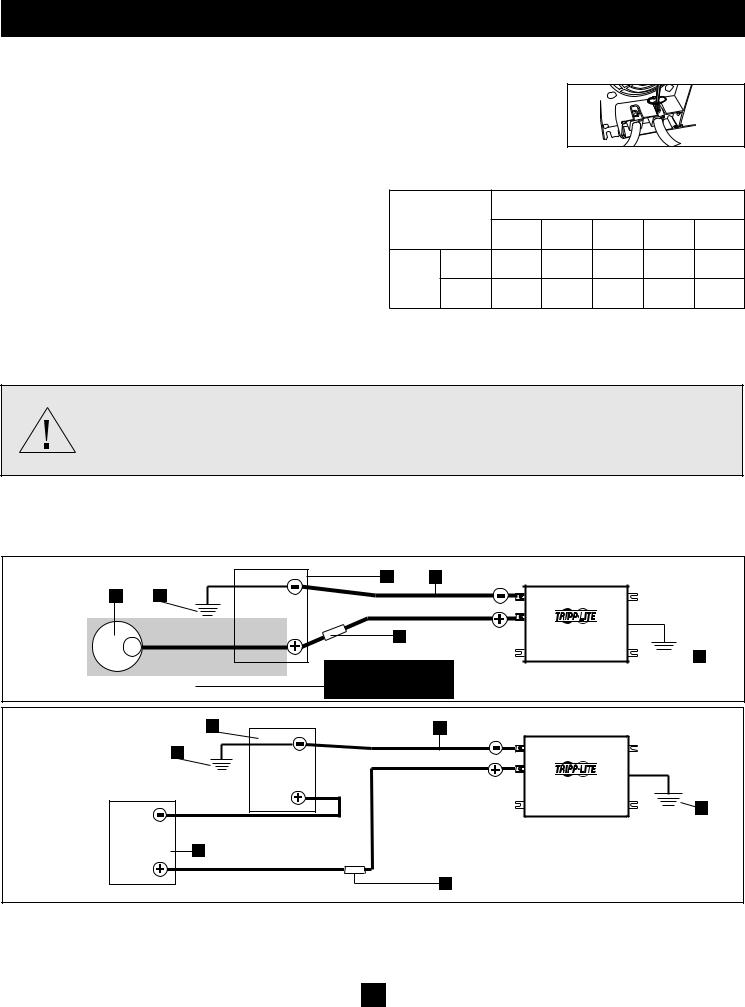
Battery Connection
Connect your Inverter/Charger to your batteries using the following procedures: |
|
|
|
|
|
|||
• Connect DC Wiring: Though your Inverter/Charger is a high-efficiency converter of electricity, its rated |
|
|
|
|||||
output capacity is limited by the length and gauge of the cabling running from the battery to the unit. Use the |
|
|
|
|||||
shortest length and largest diameter cabling (maximum 2/0 gauge) to fit your Inverter/Charger’s DC Input |
|
|
|
|||||
terminals. Shorter and heavier gauge cabling reduces DC voltage drop and allows for maximum transfer of |
|
|
|
|||||
current. Your Inverter/Charger is capable of delivering peak wattage at up to 200% of its rated continuous |
|
DC Connectors |
|
|||||
wattage output for brief periods of time. Heavier gauge cabling should be used when continuously operating |
|
|
||||||
|
|
|
|
|||||
heavy draw equipment under these conditions. Tighten your Inverter/ |
Recommended Maximum DC Cable Length (ft.) |
|
||||||
Charger and battery terminals to approximately 3.5 Newton-meters of |
|
|
|
|
|
|
|
|
torque to create an efficient connection and to prevent excessive heating at |
|
|
|
|
AWG/mm |
|
|
|
this connection. Insufficient tightening of the terminals could void your |
|
|
|
|
|
|
|
|
warranty. |
|
|
6/4.0 |
4/5.0 |
2/6.3 |
0/8.3 |
00/9.3 |
|
• Connect Ground: Using a 8 AWG (3.15 mm) wire or larger directly |
Power |
750 |
10 |
16 |
26 |
42 |
52 |
|
connect the Main Ground Lug to the vehicle’s chassis or earth ground. |
||||||||
Output |
|
|
|
|
|
|
||
See the Feature Identification section to locate the Main Ground Lug on |
|
|
|
|
|
|
||
(Watts) |
1250 |
|
|
16 |
25 |
31 |
||
your specific Inverter/Charger model. All installations must comply with |
|
|
|
|
|
|
|
|
national and local codes and ordinances. |
|
|
|
|
|
|
|
|
• Connect Fuse: NEC (National Electrical Code) article 551 requires that you connect your Inverter/Charger’s positive DC Terminal directly to a UL-listed fuse(s) and fuse block(s) within 18 inches (450 mm) of the battery. The fuse’s rating must equal or exceed the Minimum DC Fuse Rating listed in your Inverter/Charger’s nameplate. See diagrams below.
WARNING!
•Failure to properly ground your Inverter/Charger to a vehicle’s chassis or earth ground may result in a lethal electrical shock hazard.
•Never attempt to operate your Inverter/Charger by connecting it directly to output from an alternator rather than a battery or battery bank.
•Observe proper polarity with all DC connections.
Your Inverter/Charger’s Nominal DC Input Voltage must match the voltage of your battery or batteries.
In vehicular applications, it is possible to connect your Inverter/Charger to the main battery within your vehicle’s electrical system. In most vehicles, the Inverter/Charger will be connected to one or more dedicated auxiliary (house) batteries which are isolated from the drive system to prevent possible draining of the main battery.
|
3 |
6 |
1 |
2 |
|
|
12 Volts |
|
|
|
5 |
12 Volts |
|
|
|
|
Optional connection for |
|
|
|
12 Volt Main Battery Connection |
|
Vehicular applications only. |
|
||
|
|
12 Volt Inverter/Charger

 7
7
|
4 |
6 |
|
2 |
|
|
|
6 Volts |
|
|
12 Volt Inverter/Charger |
|
|
7 |
6 Volts |
4 |
|
|
|
|
|
|
5 |
Multiple (Series) Battery Connection |
|
|
|
1 |
12 Volt Alternator (for Vehicular applications) |
2 |
Vehicle or Earth Battery Ground |
3 |
12 Volt Main Battery |
4 |
6 Volt Series Batteries |
||
|
|
|
|
|
|
|
||||
5 |
UL-Listed Fuse & Fuse Block (mounted within 18 inches or 450 mm of the battery) |
6 |
Large Diameter Cabling, Maximum 2/0 Gauge (9.3 mm) to Fit |
|||||||
Terminals |
|
Minimum 8 AWG (3.15 mm) Ground Wire |
|
|
|
|
||||
7 |
|
|
|
|
||||||
9
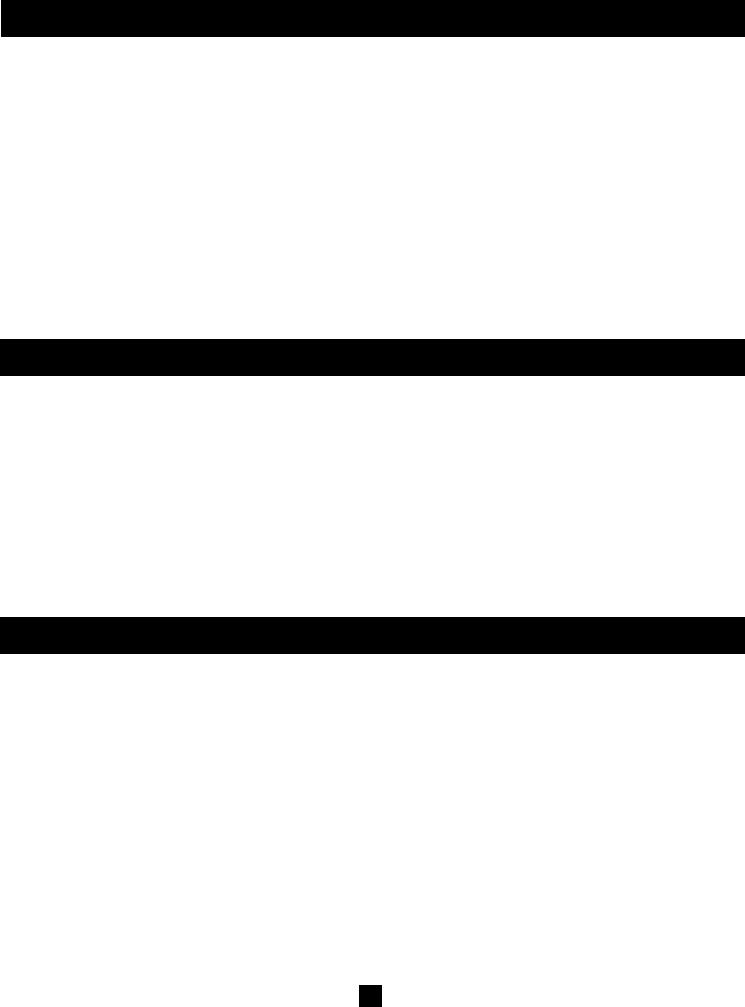
AC Input/Output Connection
To avoid overloading your Inverter/Charger, match the power requirements of the equipment you plan to run at any one time (add their total watts) with the output wattage capacity of your Inverter/Charger model (see Specifications). Do not confuse “continuous” wattage with “peak” wattage ratings. Most electric motors require extra power at start-up (“peak wattage”) than required to run continuously after start-up, sometimes over 100% more. Some motors, such as in refrigerators and pumps, start and stop intermittently according to demand, requiring
“peak wattage” at multiple, unpredictable times during operation. Compact Fluorescent Lamps (CFLs) have high startup power require- ments—typically 500% of their nameplate power rating. Larger CFL loads may be powered if they are started one bulb at a time. DoubleBoost™ Feature: Tripp Lite Inverter/Chargers deliver up to twice their nameplate rated wattage for up to 10 seconds,* providing the extra power needed to cold start heavy-duty tools and equipment. OverPower™ Feature: Tripp Lite Inverter/Chargers deliver up to 150% of their name-plate rated wattage for up to 1 hour,* providing plenty of reserve power to reliably support tools and equipment longer.
* Actual duration depends on model, battery age, battery charge level and ambient temperature.
AC Input Connection
Plug the Inverter/Charger's AC input cord into an outlet providing AC voltage that matches the voltage rating of your unit (see nameplate). Make sure that the circuit you connect your Inverter/Charger to has adequate overload protection, such as a circuit breaker or a fuse. Plug your equipment into the Inverter/Charger’s AC output receptacles. Any equipment you connect to it will benefit from your Inverter/Charger’s built-in ISOBAR® surge protection!
Service
Before returning your Inverter/Charger for service, follow these steps: 1.) Review the installation and operation instructions to ensure that the service problem does not originate from a misreading of the instructions. Also, check that the circuit breaker(s) are not tripped.* 2.) If the problem continues, do not contact or return the Inverter/Charger to the dealer. Instead, call Tripp Lite at 773.869.1234. A service tech- nician will ask for the Inverter/Charger’s model number, serial number and purchase date and will attempt to correct the problem over the phone. 3.) If the problem requires service, the technician will issue you a Returned Material Authorization (RMA) number, which is required for service. Securely pack the Inverter/Charger to avoid damage during shipping. Do not use Styrofoam beads for packaging.**
Any damages (direct, indirect, special, incidental or consequential) to the Inverter/Charger incurred during shipment to Tripp Lite or an authorized Tripp Lite service center is not covered under warranty. Inverter/Chargers shipped to Tripp Lite or an authorized Tripp Lite service center must have transportation charges prepaid. Mark the RMA number on the outside of the package. If the Inverter/Charger is within the warranty period, enclose a copy of your sales receipt. Return the Inverter/Charger for service using an insured carrier to the address given to you by the Tripp Lite service technician.
* This is a common cause of service inquiries which can be easily remedied by following the resetting instructions in this manual. ** If you require packaging, the technician can arrange to send you proper packaging.
Maintenance
Your Inverter/Charger requires no maintenance and contains no user-serviceable or replaceable parts, but should be kept dry at all times. Periodically check, clean and tighten all cable connections, as necessary, both at the unit and at the battery.
10

Troubleshooting
Try these remedies for common Inverter/Charger problems before calling for assistance. Call Tripp Lite Customer Service at 773.869.1234 before returning your unit for service.
SYMPTOM |
PROBLEMS |
CORRECTIONS |
|
|
|
|
|
No AC Output |
Unit is not properly connected to utility power |
Connect unit to utility power. |
|
(All Indicator Lights are OFF) |
|
|
|
Operating Mode Switch is set to “DC OFF” and AC input |
Set Operating Mode Switch to “AUTO/REMOTE” or “CHARGE ONLY” |
||
|
|||
|
is present. |
|
|
|
|
|
|
|
This is normal when the Operating Mode Switch is set to |
No correction is required. AC output will return when AC input returns. Set |
|
|
“CHARGE ONLY” and AC input is absent. |
Operating Mode Switch to “AUTO/REMOTE” if you require AC output. |
|
|
|
||
|
|
|
|
|
Output circuit breaker is tripped. |
Reset circuit breaker. |
|
|
|
|
|
|
Unit has shut down due to battery overcharge (preventing |
Disconnect any auxiliary chargers. Reset by moving Operating Mode Switch |
|
|
battery damage). The problem may be with connected |
to “DC OFF”. Wait 1 minute and switch to “AUTO/REMOTE” or “CHARGE |
|
|
auxiliary chargers, if any, or with the unit’s charger. |
ONLY.” If unit remains in shutdown mode after several attempts to reset, |
|
|
|
contact Tripp Lite Customer Service for assistance. |
|
|
|
|
|
|
Unit has shut down due to excessive battery discharge. |
Use an auxiliary charger* to raise battery voltage. Check external battery |
|
|
|
connections and fuse. Unit automatically resets when condition is cleared. |
|
|
|
|
|
|
Connected batteries are dead. |
Check and replace old batteries. |
|
|
|
|
|
|
Unit has shut down due to overload. |
Reduce load. Reset by moving Operating Mode Switch to “DC OFF”. Wait 1 |
|
|
|
minute. Switch to “AUTO/REMOTE” or “CHARGE ONLY”. |
|
|
|
|
|
Battery Not Recharging |
Connected batteries are dead. |
Check and replace old batteries. |
|
(AC Input Present) |
|
|
|
Battery fuse* is blown. |
Check and replace fuse.* |
||
|
|||
|
|
|
|
|
Battery cabling* is loose. |
Check and tighten or replace cabling.* |
|
|
|
|
|
|
Unit has shut down due to battery overcharge (preventing |
Disconnect any auxiliary chargers. Reset by moving Operating Mode Switch |
|
|
battery damage). The problem may be with connected |
to “DC OFF”. Wait 1 minute and switch to “AUTO/REMOTE” or “CHARGE |
|
|
auxiliary chargers, if any, or with the unit’s charger. |
ONLY.” If unit remains in shutdown mode after several attempts to reset, |
|
|
|
contact Tripp Lite Customer Service for assistance. |
|
|
|
|
|
|
Charger Enable/Inhibit Switch inadvertently set to "INHIBIT". |
Set Charger Enable/Inhibit Switch to "ENABLE". |
|
|
|
|
|
|
Charger circuit breaker is tripped. |
Reset circuit breaker. |
|
|
|
|
|
All Three “BATT VOLT/CHRG CURR” |
Battery is excessively discharged. Unit will shut down to |
Use an auxiliary charger* to raise battery voltage. Check external battery |
|
LEDs are slowly flashing (½ second |
prevent battery damage. |
connections and fuse. Unit automatically resets when condition is cleared. |
|
flashes) with Operating Mode Switch in |
|
|
|
the “AUTO/REMOTE” position. |
|
|
|
|
|
|
|
All Three “BATT VOLT/CHRG CURR” |
Battery is overcharged. Unit will shut down to prevent |
Disconnect any auxiliary chargers. Reset by moving Operating Mode Switch |
|
LEDs are rapidly flashing (¼ second |
battery damage. The problem may be with connected |
to “DC OFF”. Wait 1 minute and switch to “AUTO/REMOTE.” If unit remains |
|
flashes) with Operating Mode Switch in |
auxiliary chargers, if any, or with the unit’s charger. |
in shutdown mode after several attempts to reset, contact Tripp Lite |
|
the “AUTO/REMOTE” position. |
|
Customer Service for assistance. |
|
|
|
|
|
Red “LOW” Battery Indicator Light is |
Battery voltage is low. Unit has shut down to protect battery |
If AC power (utilityor generator-supplied) is present, the unit will |
|
flashing with Operating Mode Switch in |
from damage. |
automatically reset itself and start recharging connected batteries. However, |
|
the ”AUTO/REMOTE” position. |
|
if an external charger is used to recharge the batteries, you will need to |
|
|
|
manually reset the unit by moving the Operating Mode Switch to “DC OFF” |
|
|
|
for two seconds then returning it to “AUTO/REMOTE”. |
|
|
|
|
|
|
False reading due to undersized or insufficiently connected |
Use sufficient size DC cable sufficiently connected to Inverter/Charger. |
|
|
DC cabling |
|
|
|
|
|
|
Red “LOAD” Operation Indicator Light |
Inverter is overloaded. Unit will automatically shut down after |
Reduce load. Reset by moving Operating Mode Switch to “DC OFF”. Wait 1 |
|
flashing |
5 seconds. |
minute. Switch to “AUTO/REMOTE” or “CHARGE ONLY”. |
|
|
|
|
* User-supplied.
Limited Warranty
Tripp Lite warrants its Inverter/Chargers to be free from defects in materials and workmanship for a 12 month period from the date of retail purchase by end user.
Tripp Lite’s obligation under this warranty is limited to repairing or replacing (at its sole option) any such defective products. To obtain service under this warranty you must obtain a Returned Material Authorization (RMA) number from Tripp Lite or an authorized Tripp Lite service center. Products must be returned to Tripp Lite or an authorized Tripp Lite service center with transportation charges prepaid and must be accompanied by a brief description of the problem encountered and proof of date and place of purchase. This warranty does not apply to equipment which has been damaged by accident, negligence or misapplication or has been altered or modified in any way, including opening of the unit’s casing for any reason. This warranty applies only to the original purchaser who must have properly registered the product within 10 days of retail purchase.
EXCEPT AS PROVIDED HEREIN, TRIPP LITE MAKES NO WARRANTIES, EXPRESS OR IMPLIED, INCLUDING WARRANTIES OF MERCHANTABILITY AND FITNESS FOR A PARTICULAR PURPOSE. Some states do not permit limitation or exclusion of implied warranties; therefore, the aforesaid limitation(s) or exclusion(s) may not apply to the purchaser.
EXCEPT AS PROVIDED ABOVE, IN NO EVENT WILL TRIPP LITE BE LIABLE FOR DIRECT, INDIRECT, SPECIAL, INCIDENTAL OR CONSEQUENTIAL DAMAGES ARISING OUT OF THE USE OF THIS PRODUCT, EVEN IF ADVISED OF THE POSSIBILITY OF SUCH DAMAGE. Specifically, Tripp Lite is not liable for any costs, such as lost profits or revenue, loss of equipment, loss of use of equipment, loss of software, loss of data, costs of substitutes, claims by third parties, or otherwise.
WARRANTY REGISTRATION
Visit www.tripplite.com/warranty today to register the warranty for your new Tripp Lite product. You'll be automatically entered into a drawing for a chance to win a FREE Tripp Lite product!*
* No purchase necessary. Void where prohibited. Some restrictions apply. See website for details.
Regulatory Compliance Identification Numbers: For the purpose of regulatory compliance certifications and identification, your Tripp Lite product has been assigned a unique series number. The series number can be found on the product nameplate label, along with all required approval makings and information. When requesting compliance for this product, always refer to the series number. The series number should not be confused with the makings name or model number of the product.
Tripp Lite follows a policy of continuous improvement. Product specifications are subject to change without notice. Made in China.
11 |
200812163 93-2803 |
|
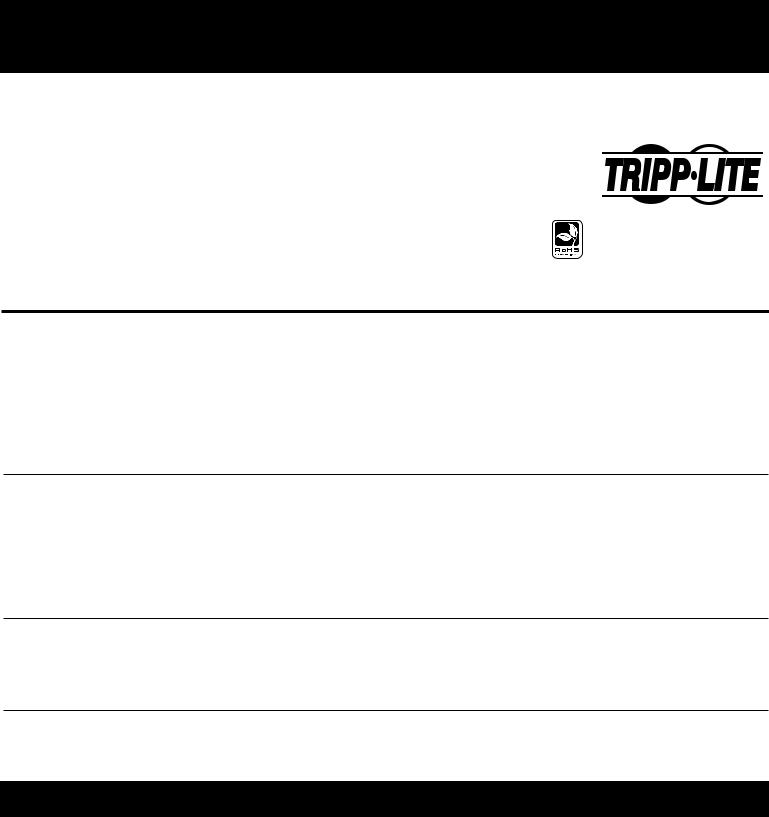
Manual del Propietario
PowerVerter®
Inversores/Cargadores de CD a CA
Modelos APSX |
Entrada |
Salida |
|
Modelos APSX |
Entrada |
Salida |
|
1111 W. 35th Street, Chicago, IL 60609 USA |
Customer Support: 773.869.1234 |
||||||||
Inversión: |
12 VCD |
230V, 50 Hz. CA |
Inversión: |
12 VCD |
120V, 60 Hz. CA |
www.tripplite.com |
||
|
||||||||
Carga: |
230V, 50 Hz. CA |
12 VCD |
Carga: |
120V, 60 Hz. CA |
12 VCD |
|
||
Energía Móvil Silenciosa
¡Felicitaciones! Usted ha adquirido el inversor/cargador con más características y más avanzado diseñado como fuente alternativa de energía para aplicaciones residenciales, comerciales o de vehículos para uso recreativo. Los cargadores/inversores de Tripp Lite son la alternativa silen- ciosa a los generadores de gas: ¡nada de humos, combustible o ruido con que lidiar en lo absoluto! Usted obtiene electricidad de CA en cual- quier lugar y en cualquier momento que la necesite: en interrupciones de la energía de la red pública, conduciendo por la carretera, de campa- mento en un majestuoso campo o estacionado durante la noche en un lugar económico y sin electricidad. El inversor/cargador entrega a su equipo electricidad de CA de la red pública o suministrada por generador (filtrada a través de la protección contra sobretensiones de primer nivel ISOBAR®) cuando esté disponible. Además, su inversor/cargador recarga automáticamente su módulo de baterías conectado. Cuando se pro- duzcan apagones, caídas de voltaje o alto voltaje, su inversor/cargador cambia de manera inmediata y automática a energía de la batería.
Mejor para su Equipo
Niveles de Protección Premium
•Protección contra sobretensiones ISOBAR® integrada
•Protección automática contra sobrecarga
Ideal para Salida para Todas las Cargas
•Salida de frecuencia controlada
•Conmutación de carga automática
•Uso compartido y equilibrado de la carga
Mejor para sus Baterías
Recarga de Baterías más Rápida
• Cargador de baterías de 3 etapas de alto amperaje
Protección Crítica para Baterías
• Inversión de CD a CA de alta eficiencia
Mejor para Usted
Operación Silenciosa, Simple y sin Mantenimiento
•Luces e interruptores de múltiples funciones
•Construcción resistente a la humedad *
Contents
Seguridad |
2 |
Identificación de Características |
3 |
Operación |
4-5 |
Configuración |
5-6 |
Selección de la Batería |
7 |
Montaje |
8 |
Conexión de la Batería |
9 |
Conexión de Entrada/Salida de CA |
10 |
Reparación/Mantenimiento |
10 |
Solución de Problemas |
11 |
Garantía Limitada |
11 |
* Los inversores/cargadores son resistentes a la humedad, pero no son a prueba de agua. Copyright © 2008. Todos los derechos reservados. PowerVerter® es una marca comercial de Tripp Lite
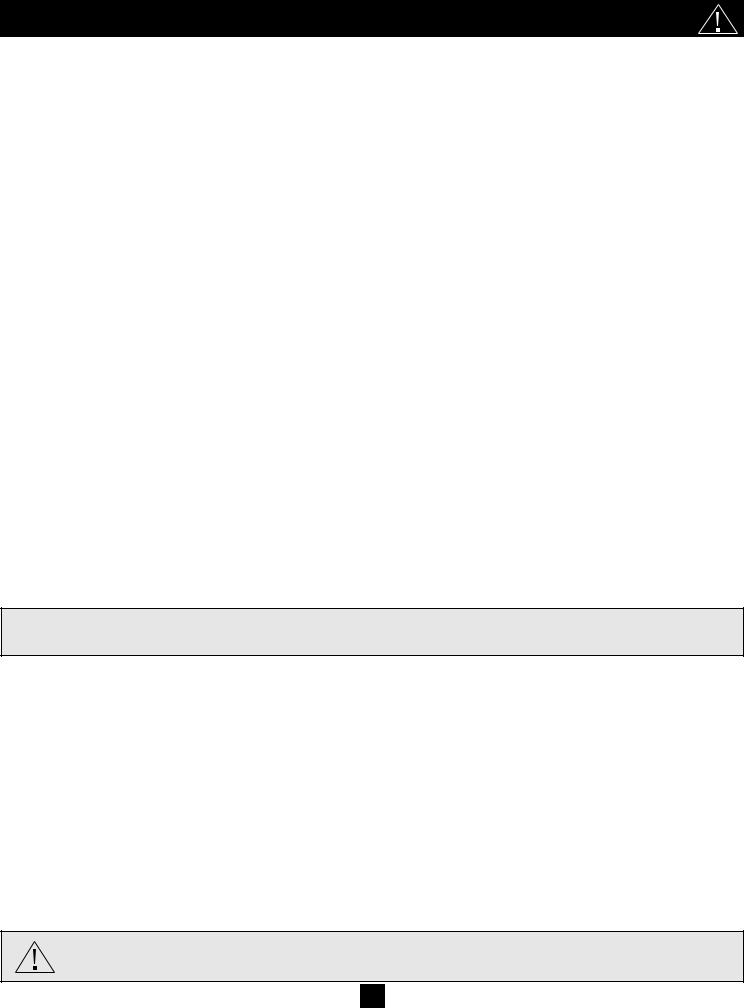
Instrucciones de Seguridad Importantes
¡GUARDE ESTAS INSTRUCCIONES!
Este manual contiene instrucciones y advertencias importantes que deben seguirse durante la instalación, operación y almacenamiento de este producto.
Advertencias acerca de la Ubicación
•Aunque su inversor/cargador es resistente a la humedad, NO es a prueba de agua. Si moja la unidad podría ocurrir un cortocircuito y alguien podría resultar herido debido a descarga eléctrica. Nunca sumerja la unidad y evite cualquier área donde podría acumula rse agua detenida. El montaje debe hacerse en la ubicación más seca posible.
•Deje un espacio libre mínimo de 2" (5cm) en la parte frontal y posterior del inversor/cargador para que haya una ventilación adecua da. Para evitar que el inversor/cargador se apague automáticamente debido a sobretemperatura, el compartimiento que contiene el inversor/cargador debe ventilarse adecuadamente con un flujo de aire externo adecuado. Mientras más pesada sea la carga del equipo conectado, más calor generará la unidad.
•No instale el inversor/cargador directamente cerca de medios de almacenamiento magnéticos, ya que esto podría hacer que se cor rompan los datos.
•No haga la instalación cerca de materiales inflamables, combustible o sustancias químicas.
•No monte esta unidad con el panel frontal o con el panel trasero hacia abajo (Bajo ningún ángulo o inclinación). Si lo monta de esta manera, inhibirá seriamente el sistema de enfriamiento interno de la unidad; lo que finalmente causará daños al producto que no están cubiertos por la garantía.
Advertencias acerca de la Conexión de la Batería
•La batería debe estar conectada antes de operar el inversor/cargador
•Los sistemas con varias baterías deben estar compuestos de baterías con voltaje, antigüedad, capacidad de amperes-hora y tipo idénticos.
•Debido a que se puede acumular gas hidrógeno explosivo cerca de las baterías si no se mantienen bien ventiladas, sus baterías no deben instalarse (ya sea en una aplicación móvil o fija) en un compartimiento con "aire muerto". Idealmente, todo compartimiento debe tener algo de ventilación hacia el aire exterior.
•Podrían producirse chispas durante la conexión final de la batería. Siempre cumpla con la polaridad adecuada cuando se conecten las baterías.
•No permita que los objetos hagan contacto con los dos terminales de entrada de CD. No acorte ni conecte juntos estos terminales. Podrían producirse serias lesiones personales
•daño a la propiedad.
Advertencias acerca de la Conexión del Equipo
El uso de este equipo en aplicaciones de soporte de vida en donde la falla de este equipo pueda razonablemente hacer suponer que causará fallas en el equipo de soporte de vida o afecte significativamente su seguridad o efectividad, no está recomendado. No use este equipo en la presencia de una mezcla anestésica inflamable con aire, oxigeno u óxido nitroso.
•Si conecta un supresor de sobretensiones, regulador de voltaje/acondicionador o sistema UPS a la salida del inversor/cargador puede experimentar resultados irregulares en el rendimiento.
•Modelos con Cable: No modifique la clavija o receptáculo del inversor/cargador de manera que se elimine su conexión a tierra. No utilice adaptadores que eliminen la conexión a tierra de la clavija.
•Conecte su inversor/cargador solo a un tomacorriente de salida de CA o fuente de instalación eléctrica permanente puestos ade cuadamente a tierra. No enchufe la unidad a sí misma; esto dañará el dispositivo y anulará la garantía.
•El poste de conexión a tierra principal debe estar conectado a tierra o al chasis de un vehículo con un cable de 8 AWG mínimo.
Advertencias acerca de la Operación
•Su inversor/cargador no requiere mantenimiento de rutina. No abra el dispositivo por ningún motivo. Dentro no hay piezas que puedan ser reparadas por el usuario.
•Dentro del inversor/cargador existen voltajes potencialmente letales siempre que estén conectados el suministro de la batería o la
entrada de CA. Por lo tanto, durante cualquier trabajo de reparación, deben desconectarse el suministro de la batería y la conexión de entrada de CA (si la hubiere).
•No conecte o desconecte las baterías mientras el inversor/cargador está operando en modo de inversión o carga. El interruptor del modo de operación debe estar en la posición DC OFF (CD apagada). Podría producirse un arco peligroso.
Precaución: Estos modelos poseen una característica de paso de CA a prueba de fallas donde la salida de CA estará cargada (si la entrada de CA está disponible) aun cuando el interruptor de modo de operación esté en “DC OFF” (CD apagada).
13
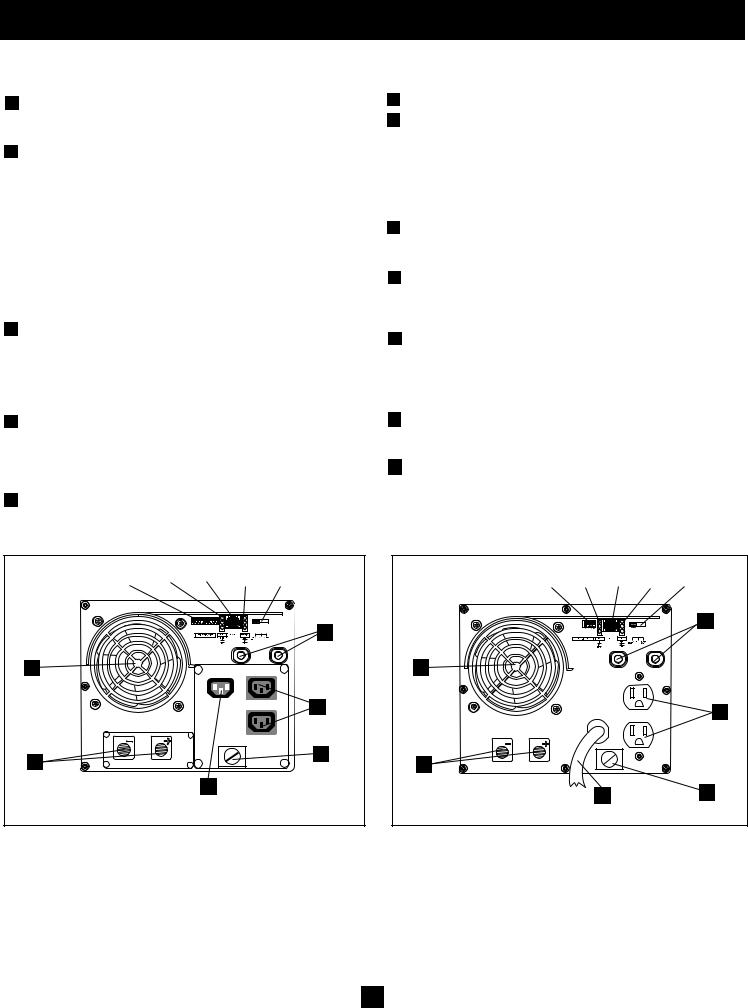
Identificación de Características
Identifique las características premium en su modelo específico y encuentre rápidamente las instrucciones sobre cómo maximizar su uso.
1InterruptoresparaConfiguración:optimizanelfuncionamiento del inversor/cargador dependiendo de su aplicación. Consulte la sección de Configuración par ver las instrucciones.
2Interruptor de Modo de Operación: controla la operación del inversor/cargador. El ajuste "AUTO/REMOTE" (Automático/ Remoto) garantiza que su equipo reciba alimentación de CA constante e ininterrumpida. También permite monitorear y controlar el inversor/cargador de manera remota con un módulo remoto opcional (modelo APSRM4 Tripp Lite, se vende por separado). El ajuste "CHARGE ONLY" (Solo carga) permite que sus baterías vuelvan a plena carga más rápido apagando el inversor, lo que detiene la descarga de la batería. El ajuste "DC OFF" (CD apagada) desactiva la unidad y conecta la AC OUT (Salida de CA) a AC IN (Entrada de CA). Consulte la sección
Operación para ver las instrucciones de configuración.
3LEDs "LINE" (Línea), "INVERT" (Invertido), "LOAD" (Carga): muestran si el inversor/cargador está operando con energía de la línea de CA o energía de la batería de CD. También le advierte si la carga del equipo conectado es muy alta. Consulte la sección Operación para obtener instrucciones sobre la lectura de las luces indicadoras.
4LEDS "BATT VOLTAGE" (Voltaje de la batería): estas tres luces se ENCENDERÁN en varias secuencias para mostrar el nivel aproximado de carga de la batería. Consulte la sección
Operación para obtener instrucciones sobre la lectura de las luces indicadoras.
5Terminales de Alimentación de CD: se conectan a los terminales de su batería. Consulte la sección de Conexión de la Batería para ver las instrucciones.
6 Tomacorrientes de Salida
7A Tomacorriente de Entrada (Modelos de 230V): conectan el cable de entrada para enchufar el inversor/cargador a cualquier fuente de energía de CA alimentada por la red pública o por un generador. El usuario debe proporcionar un cable de entrada apropiado específico para un país para modelos de 230V. Consulte la sección de Conexión de Entrada/Salida de CA para ver las instrucciones.
7B Cable de Entrada de CA (Modelos de 120V): enchufa el inversor/cargador en un tomacorriente con alimentación de CA suministrada por la red pública o un generador.
8Interruptores Automáticos Restaurables: protegen a su inversor/cargador contra daños causados por una sobrecarga o falla del cargador. Consulte la sección de Operación par ver las instrucciones de restauración.
9Conector del Módulo de Control Remoto: permite el monitoreo y control remotos con un módulo opcional (modelo APSRM4 Tripp Lite, se vende por separado). Consulte el manual del propietario del módulo remoto para ver las instrucciones de conexión.
10Poste de Tierra Principal: conecta adecuadamente el inversor/ cargador al sistema de tierra del vehículo o a tierra. Consulte la sección de Configuración par ver las instrucciones.
11Ventilador de Enfriamiento: ventilador silencioso y eficiente que prolonga la vida útil del equipo.
1 |
|
4 |
|
9 |
|
3 |
|
2 |
|
|
|
|
|
|
|
|
|
|
|
|
|
|
|
1 |
|
4 |
|
9 |
|
3 |
|
2 |
|||||
|
|
|
|
|
|
|
|
|
|
|
|
|
|
|||||
|
|
|
|
|
|
|
|
|
|
|
|
|
|
|
|
|
|
|
|
8 |
|
8 |
11 |
11 |
|
|
6 |
|
6 |
|
|
|
|
|
5 |
|
10 |
5 |
|
|
|
|
||
|
7A |
|
7B |
10 |
|
|
|
||
|
|
|
|
|
Vista frontal (Modelos 230V sin cable) |
|
|
Vista frontal (Modelos 120V con cable) |
|
14
